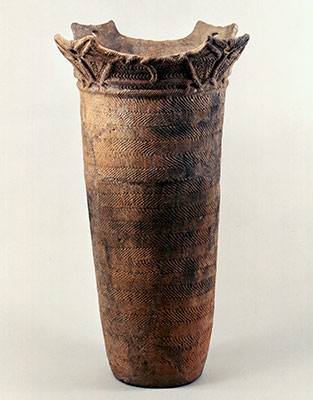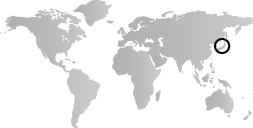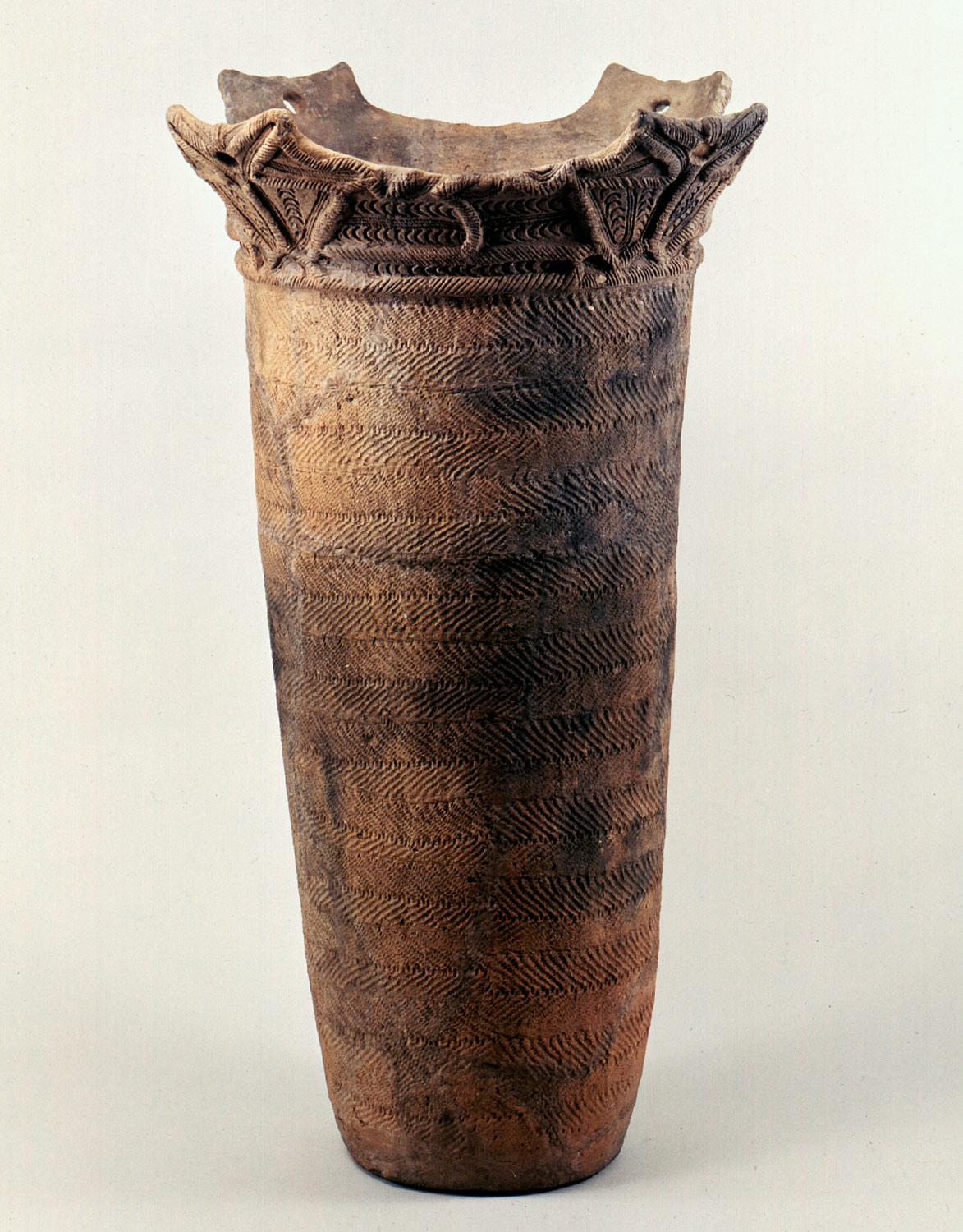Japan’s Neolithic Age coincides with a long period of climatic warming that begins about 10,000 B.C. and causes sea levels to rise—separating the Japanese archipelago from the Asian continent. This epoch, known as Jōmon, or “cord-marked,” takes its name from the distinctive vessels made during this time. Roughly contemporary with the civilizations of Mesopotamia, the Nile, and the Indus Valley, the Jōmon is among the earliest pottery cultures of the world. The Jōmon people rely on hunting, fishing, and food gathering for survival. They reside in pit dwellings arranged around a central open space, which are increasingly arranged in settled communities.
Japan, 8000–2000 B.C.
Timeline
8000 B.C.
6500 B.C.
6500 B.C.
5000 B.C.
5000 B.C.
3500 B.C.
3500 B.C.
2000 B.C.
Overview
Key Events
-
ca. 10,000–7500 B.C.
Japanese potters, who are thought to have been women, begin making cooking pots with pointed bases. Carbon-14 testing of the earliest known shards has yielded a production date of about 10,500 B.C., but because this date falls outside the known chronology of pottery development elsewhere in the world, such an early date is not generally accepted.
-
ca. 8000–5000 B.C.
As a result of rising sea levels caused by postglacial warming, the occupants of the Japanese islands add marine and coastal resources—demonstrated by large amounts of seafood refuse deposited in shell mounds—to their established hunting and gathering activities.
-
ca. 7500 B.C.
Based on current archaeological evidence, Japanese potters begin around this time to decorate pottery cooking vessels, made using the coiling method and probably fired in open bonfires at approximately 600–900ºC, by pressing strands of plant fibers against the still-damp surface. These ornamental “cord-markings” (jōmon) are the origin of this culture’s name and were used in addition to the decorative methods of relief appliqué, rouletting, incising, indenting, and scraping.
-
ca. 5000–3500 B.C.
During this time people begin to live in pithouses clustered together in small groups and to use stone awls, scrapers, and axes, mulberry bark for clothes, and pits for storage. Clear cultural differences exist between the inhabitants of different parts of the islands.
-
ca. 5000–4000 B.C.
Potters in the Kantō region begin to produce cooking pots with distinctive flame-shaped rims (ka’en shiki), which are among the most exuberant ancient ceramics known. This type of ware, the production of which peaked during the Middle Jōmon, is thought to have been made for preparing food at special religious ceremonies.
Citation
“Japan, 8000–2000 B.C.” In Heilbrunn Timeline of Art History. New York: The Metropolitan Museum of Art, 2000–. http://www.metmuseum.org/toah/ht/?period=02®ion=eaj (October 2000)


